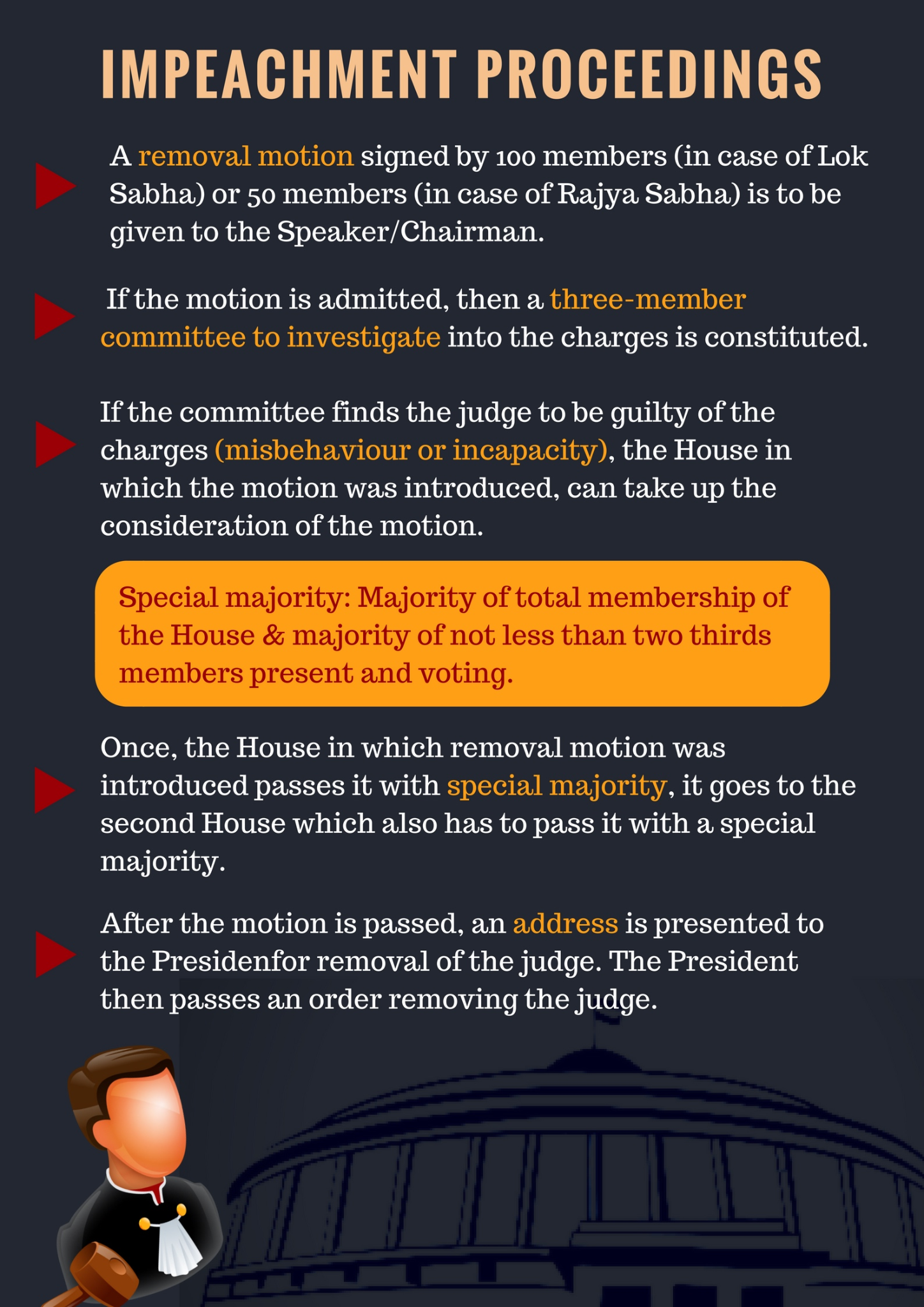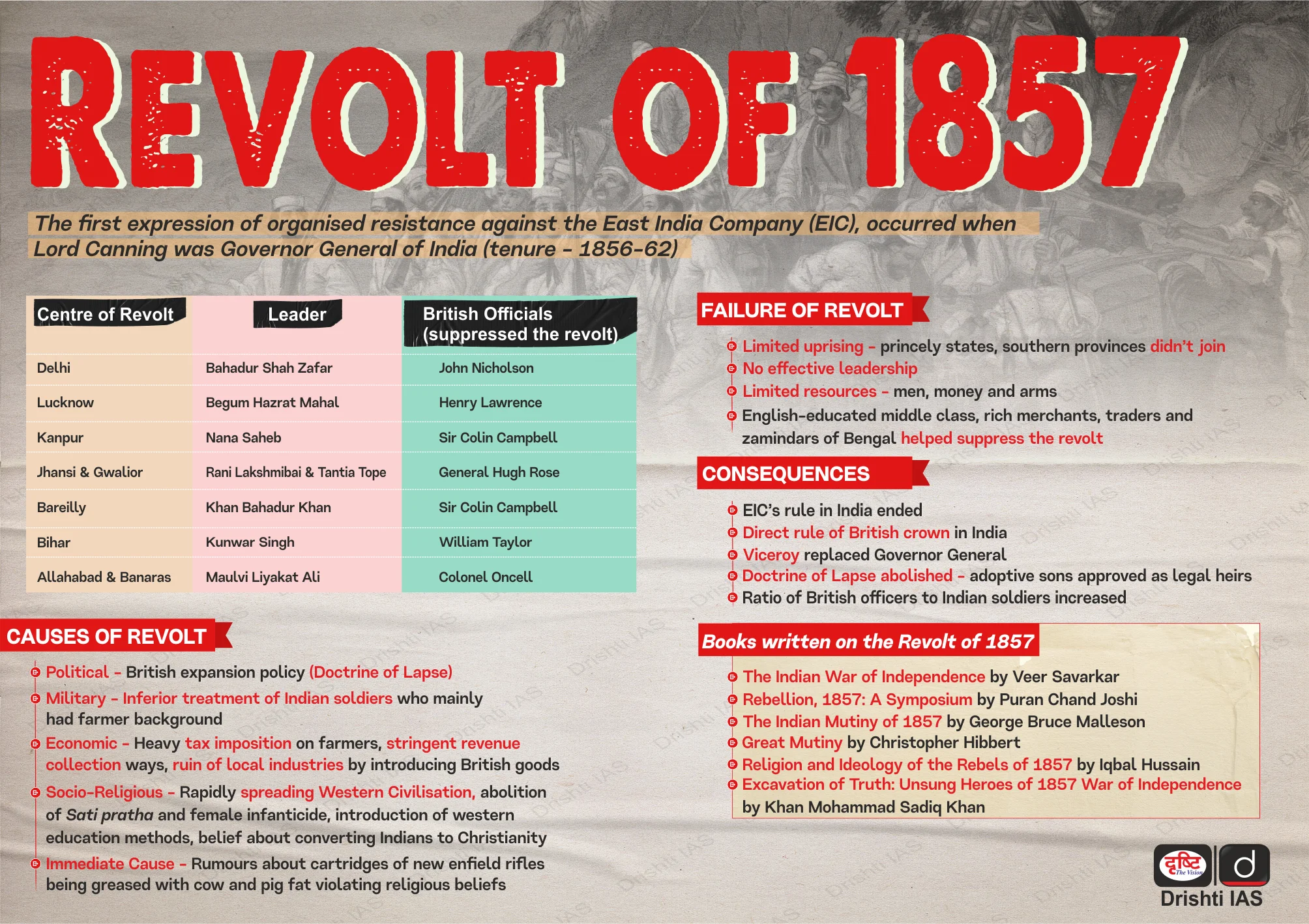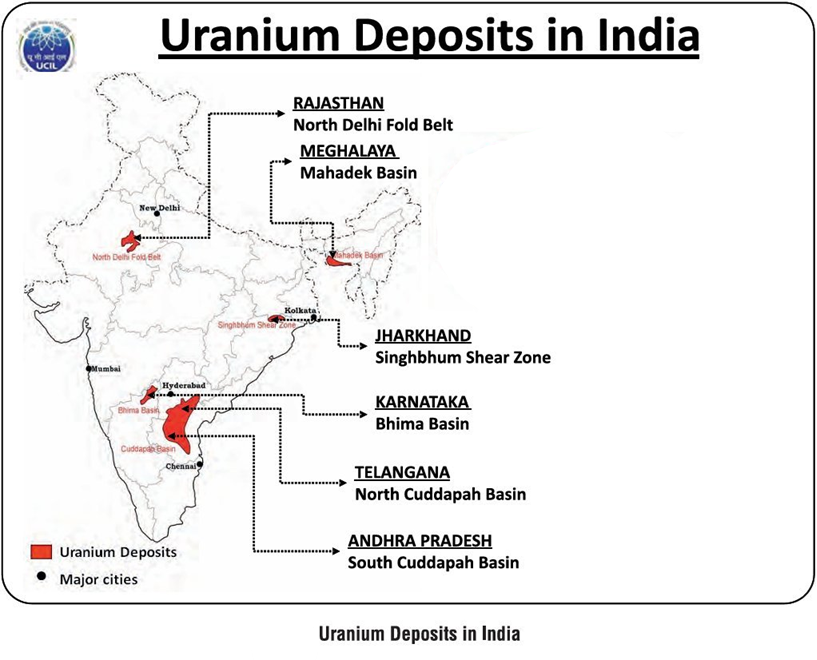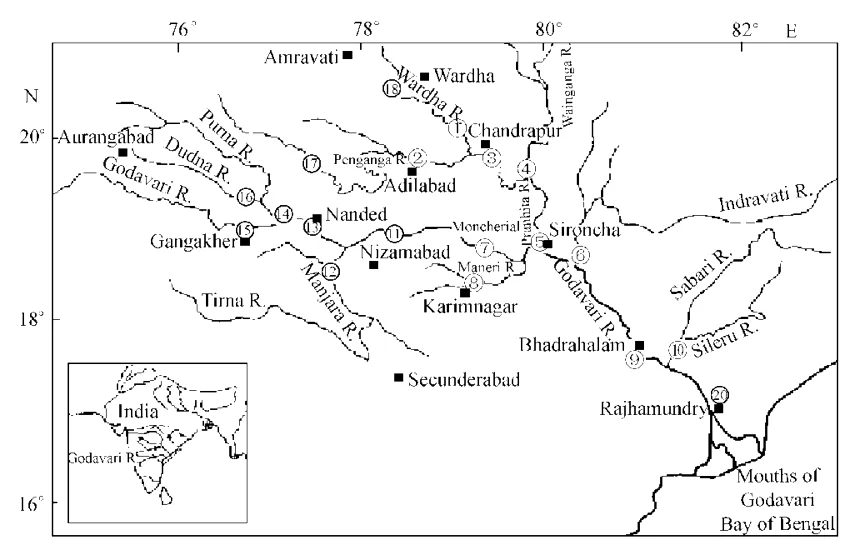Social Justice
Denial of Basic Prison Care to Disabled Violates Fundamental Rights: SC
For Prelims: Supreme Court, Rights of Persons with Disabilities Act, 2016 (RPwD Act), UN Convention on the Rights of Persons with Disabilities, Haemophilia, Sickle Cell Anemia.
For Mains: Key features of Rights of Persons with Disabilities Act, 2016, Supreme Court guidelines for promoting inclusivity and equal rights for Persons with Disabilities in prisons.
Why in News?
The Supreme Court (SC) of India, in L Muruganantham vs. State of Tamil Nadu Case (2025), ruled that denying prisoners with disabilities essential facilities in prisons violates their fundamental rights.
- It also emphasised reforms to align with the Rights of Persons with Disabilities Act, 2016 (RPwD Act), to ensure dignity and care for disabled inmates in prisons.
How do Structural Barriers Exacerbate the Marginalization of Disabled Inmates?
- Institutional Inaccessibility: Most prison facilities are structurally inaccessible to individuals with mobility, sensory, or cognitive impairments.
- The absence of trained caregivers or proper custodial policies has led to denial of daily care—such as assistance with bathing, eating, and dressing—further exacerbating the suffering of disabled prisoners.
- Social exclusion faced in free society is intensified in custody due to bureaucratic apathy and lack of institutional sensitivity.
- The Court emphasized that such inaccessibility violates prisoners’ fundamental rights, including their dignity under Article 21 of the Indian Constitution.
- Procedural Discrimination: Lack of interpreters, sign language facilitators, and accessible formats in trial proceedings deny fair hearing.
- Absence of assistive technologies, caregivers, or communication aids was deemed as “indirect discrimination.’’
- Neglect of Therapeutic Needs: Absence of dedicated physiotherapy, psychotherapy, or psychiatric care facilities in jails leads to avoidable deterioration of health.
- Data Gaps: NCRB does not record disability status of prisoners, hampering policy design and targeted intervention.
- Violation of RPwD Act, 2016: The SC’s judgment highlights breaches of Sections 6, 25, and 38 of the Rights of Persons with Disabilities (RPwD) Act, 2016, which mandate accessible infrastructure and reasonable accommodations in institutions, including prisons.
- The Court criticized prison manuals as outdated and not compliant with RPwD Act, 2016 or prior judicial pronouncements.
What are the Constitutional and Legal Rights of PWDs in Custodial Settings?
- Fundamental Rights Violations: Article 14 (Equality before law) and Article 21 (Right to life and personal liberty) are directly infringed when basic care is denied.
- The Court affirmed that incarceration does not justify the denial of dignity, humane treatment, or necessary accommodations.
- RPwD Act, 2016 Provisions:
- Section 6: Protection and safety in situations of risk, including custodial settings.
- Section 25: Access to healthcare, including preventive and rehabilitative services.
- Section 38: Mandates equal opportunity in all public services including law enforcement and justice systems.
- International Commitments: Article 15 of the United Nations Convention on Rights of Persons with Disabilities (UNCRPD), to which India is a signatory, prohibits any cruel, inhuman, or degrading treatment of disabled persons in detention.
Rights of Persons with Disabilities Act, 2016
- About: The RPwD Act, 2016 was enacted to implement the UN Convention on the Rights of Persons with Disabilities, which India ratified in 2007.
- It replaced the earlier Persons with Disabilities (Equal Opportunity, Protection of Rights and Full Participation) Act, 1995.
- According to Census 2011, there are 2.68 crore persons with disabilities in India which constitute 2.21% of the total population.
- Key Features:
- Expanded Definition of Disability: The types of disabilities have been increased from existing 7 to 21 in which for the first time Acid Attack Victims, Blood diseases like Haemophilia & Sickle Cell Anemia among others have been included.
- Rights and Entitlements: Appropriate governments are responsible for ensuring equal rights for persons with disabilities.
- It also provides additional benefits for individuals with benchmark disabilities and those requiring high support, including a minimum 5% reservation in higher education, 4% in government jobs, and 5% in land allotment.
- Mandates for Public Buildings: The Rights of Persons with Disabilities Rules, 2017 require the central government to set accessibility standards for persons with disabilities across public buildings, transport, and ICT infrastructure.
What are the SC’s Key Directives for Making Prisons Disabled-Friendly?
- Identification of Prisoners with Disabilities: Prison authorities must promptly identify prisoners with disabilities at admission, allowing them to declare their condition and specific needs.
- Universal Accessibility: Rules and essential prison information must be provided in accessible formats like Braille, large print, sign language, or simplified language, ensuring universal accessibility.
- Prisons must have wheelchair-friendly spaces, accessible toilets, and ramps to ensure universal accessibility.
- Therapeutic Facilities: All prisons must have dedicated spaces for physiotherapy, psychotherapy, and other essential therapeutic services.
- Access Audit: A State-level access audit of all prisons in Tamil Nadu must be completed within six months by an expert committee including officials from the Social Welfare Department, the Department for the Welfare of Differently Abled Persons, and certified access auditors.
- Training and Sensitization of Prison Officials: Prison staff should undergo training and sensitization on the needs of prisoners with disabilities to promote a compassionate and informed approach.
Conclusion
The Supreme Court’s ruling in L Muruganantham vs. State of Tamil Nadu Case (2025) marks a significant step towards inclusive prison reform. By enforcing the RPwD Act and aligning with constitutional and international standards, the judgment reinforces dignity, accessibility, and humane treatment for prisoners with disabilities, ensuring their fundamental rights are protected.
|
Drishti Mains Question: Examine the structural challenges faced by persons with disabilities in India’s prison system. What reforms are necessary? |
UPSC Civil Services Examination, Previous Year Question (PYQ)
Prelims
Q. India is home to lakhs of persons with disabilities. What are the benefits available to them under the law? (2011)
- Free schooling till the age of 18 years in government run schools.
- Preferential allotment of land for setting up business.
- Ramps in public buildings.
Which of the statements given above is/are correct?
(a) 1 only
(b) 2 and 3 only
(c) 1 and 3 only
(d) 1, 2 and 3
Ans: (d)
Mains
Q. Does the Rights of Persons with Disabilities Act, 2016 ensure effective mechanism for empowerment and inclusion of the intended beneficiaries in the society? Discuss. (2017)

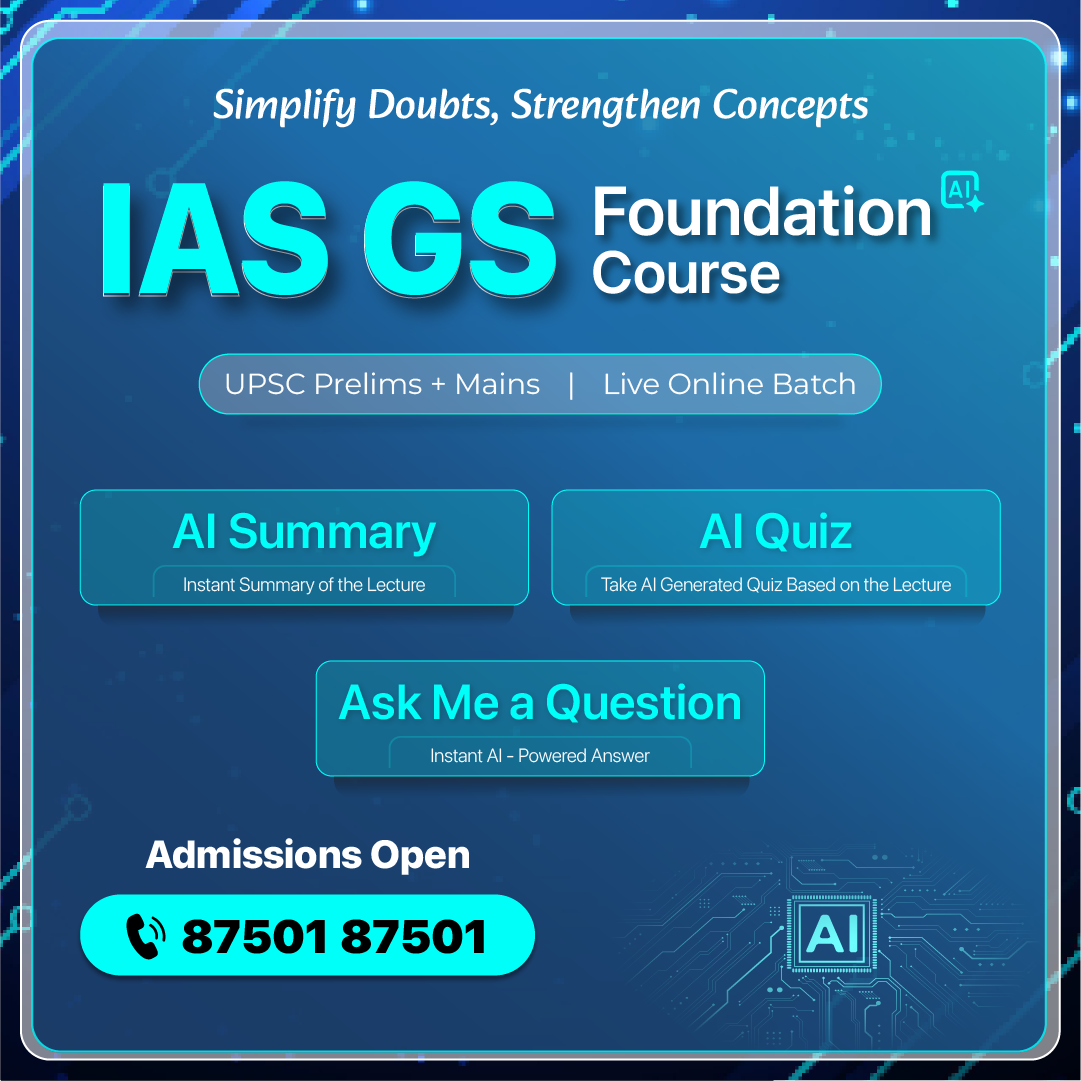
Economy
OECD-FAO Agricultural Outlook 2025-2034
For Prelims: Organisation for Economic Co-operation and Development, Food and Agriculture Organization, Biofuels, Ethanol
For Mains: Food Security vs. Biofuel Production, Impact of biofuel policies on food systems, Agricultural productivity
Why in News?
The Organisation for Economic Co-operation and Development (OECD) and the Food and Agriculture Organization (FAO) Agricultural Outlook 2025-2034 report, offers a 10-year outlook on global agricultural and fish markets to guide evidence-based policymaking.
What are the Global Market Trends According to OECD-FAO Agricultural Outlook 2025-2034?
- Cereal Production and Biofuel Demand: Global cereal production is expected to grow at 1.1% annually, driven largely by yield increases (0.9% per year). However, the expansion of harvested area will slow to 0.14% annually through 2034.
- By 2034, 40% of cereal production will be consumed directly by humans, while 33% will be used for animal feed and 27% will be diverted to biofuels and industrial uses.
- By 2034, India and Southeast Asia will drive 39% of global cereal consumption growth, while China’s share will fall to 13% from 32%, reflecting changing consumption trends.
- Biofuel demand is projected to grow at 0.9% annually, primarily due to increases in countries like Brazil, India, and Indonesia.
- By 2034, 40% of cereal production will be consumed directly by humans, while 33% will be used for animal feed and 27% will be diverted to biofuels and industrial uses.
- Agricultural and Fish Commodity Growth: Global agricultural and fish production is projected to grow by 14% through 2034, primarily driven by productivity gains in middle-income nations.
- However, this growth will also lead to a 6% increase in agricultural greenhouse gas emissions.
- Rise in Animal Product Consumption: Global per capita calorie intake from livestock and fish products is expected to increase by 6% over the next decade, driven by growth in lower-middle-income countries, where intake is anticipated to rise by 24% nearly four times the global average.
- This increase will raise daily intake in lower-middle-income countries to 364 kcal, but low-income countries will remain far behind, with an intake of just 143 kcal, well below the 300 kcal/day target for a healthy diet.
How does the Rising Demand for Biofuels Impact Global Food Security?
- Land Use: Growing biofuel crops can reduce land available for food production. To meet the E20 target, India would need 7.1 million hectares (around 3% of its total cropped area), raising serious concerns about land use and food security.
- Pressure on Water and Resources: Biofuel crops require significant water (ethanol production uses 8-12 liters of water per liter of ethanol) and fertilizers, straining resources needed for food farming.
- Food Inflation: Biofuels raise food prices by increasing demand for feedstock crops. India’s ethanol shift to maize and rice may divert food supplies, with rice prices rising 14.5% in 2023, hitting poor households hardest.
- Poorer nations face greater risks of food insecurity due to reduced access and affordability.
- Environmental Trade-offs: Expansion of biofuel crops can lead to deforestation and biodiversity loss, indirectly affecting food systems.
How Can Sustainable Biofuel and Food Security Policies Be Ensured?
- Feedstock Diversification: Promoting 3G ethanol (from microalgae using wastewater/sewage/seawater) offers a sustainable alternative to 1G (sugarcane, wheat, rice) and 2G (crop residues) biofuels, avoiding food and water stress.
- India can also invest in developing genetically modified (GM) crops specifically tailored for biofuel production to boost yields and reduce pressure on food crops.
- Zoning and Land Use Planning: Implement a biofuel zoning policy that prevents diversion of fertile agricultural land.
- Use marginal and wastelands for biofuel crops under strict ecological safeguards to avoid deforestation or biodiversity loss.
- Crop Diversification Incentives: Strengthen Minimum Support Prices (MSP) and procurement for diverse food grains to counter biofuel-driven monocultures.
- Align ethanol procurement policies with food surplus seasons to avoid market distortion.
- Improving Productivity and Sustainability: Increased agricultural productivity is critical to reduce undernourishment and curb GHG emissions.
- The report suggests that global undernourishment could be eradicated and emissions reduced by 7% with 15% productivity improvements and investments in emissions-reduction technologies (e.g., precision farming, livestock feed enhancements, and low-cost practices like crop rotations).
Organization for Economic Co-operation and Development (OECD)
- OECD is an intergovernmental body established in 1961 to promote economic growth and global trade. Headquartered in Paris, France it has 38 member countries, mostly high-income nations with high Human Development Index (HDI).
- While India is not a member, it is a key economic partner.
- The OECD releases several important reports and indices, including Government at a Glance and the Better Life Index.
Food and Agriculture Organization (FAO)
- The FAO is the UN’s oldest specialized agency, founded in 1945, with headquarters in Rome. Its mandate is to fight hunger, improve nutrition, and promote sustainable agriculture.
- With 194 member states and the EU, FAO supports countries through research, technical aid, education, and data services.
- It focuses on agriculture, forestry, fisheries, and resource management, but food relief is handled by the World Food Programme.
- Key reports include State of World Fisheries and Aquaculture (SOFIA), State of the World's Forests (SOFO), State of Food Security and Nutrition in the World (SOFI), and State of Food and Agriculture (SOFA).
|
Drishti Mains Question: Discuss how the rising global demand for biofuels is creating trade-offs between food security. |
UPSC Civil Services Examination, Previous Year Questions (PYQ)
Prelims
Q. Given below are the names of four energy crops. Which one of them can be cultivated for ethanol? (2010)
(a) Jatropha
(b) Maize
(c) Pongamia
(d) Sunflower
Ans: (b)
Q. According to India’s National Policy on Biofuels, which of the following can be used as raw materials for the production of biofuels? (2020)
- Cassava
- Damaged wheat grains
- Groundnut seeds
- Horse gram
- Rotten potatoes
- Sugar beet
Select the correct answer using the code given below:
(a) 1, 2, 5 and 6 only
(b) 1, 3, 4 and 6 only
(c) 2, 3, 4 and 5 only
(d) 1, 2, 3, 4, 5 and 6
Ans: (a)

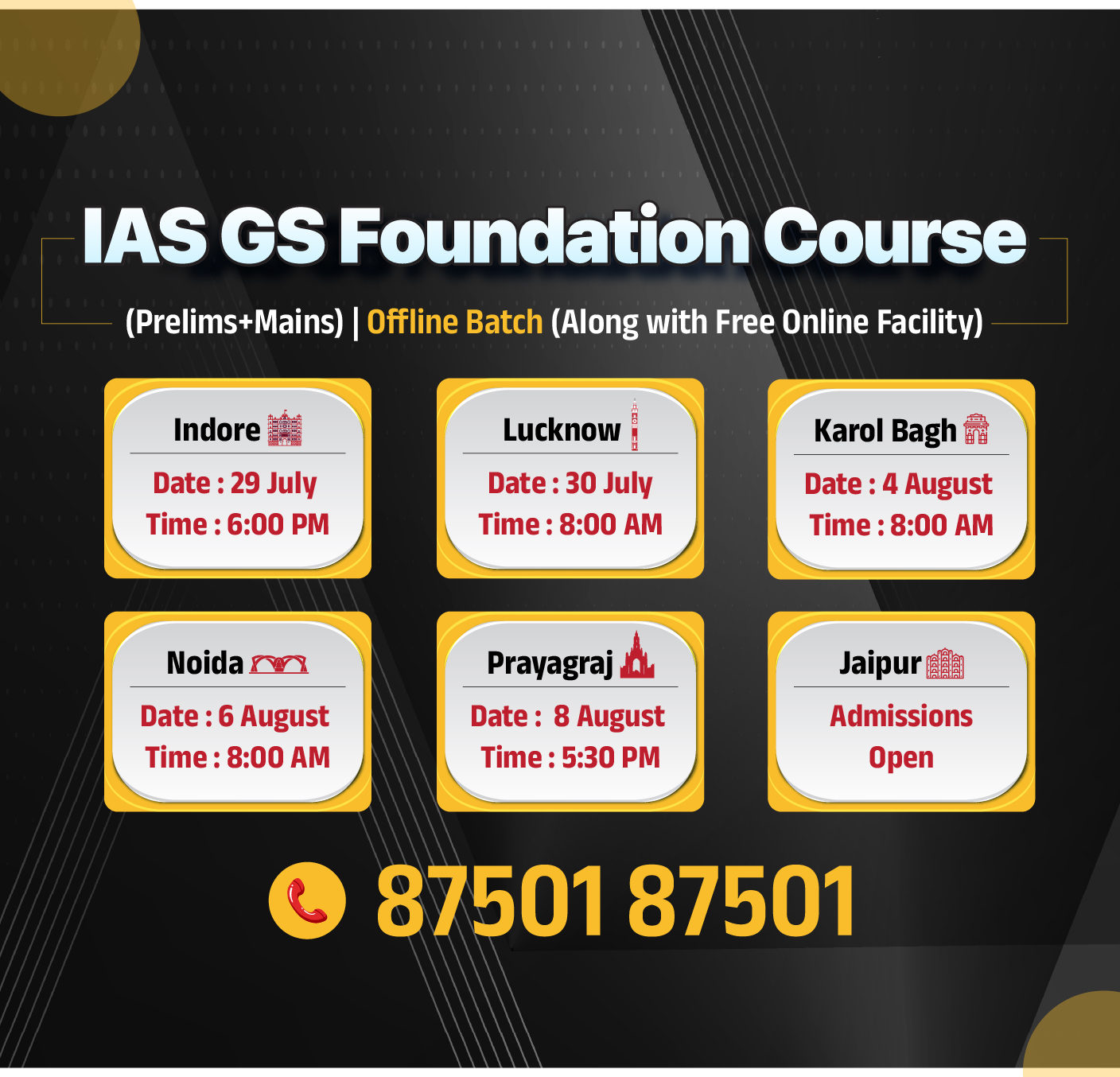
Governance
Common Service Centres: Catalysts of Rural Digital Inclusion
For Prelims: Common Service Centres, Digital India, Direct Benefits Transfer, UPI (Unified Payments Interface), JAM (Jan Dhan-Aadhaar-Mobile) system, UMANG, DigiLocker, National e-Governance Plan (NeGP), Aadhaar, PAN, DigiLocker
For Mains: Significance of CSC Under Digital India Mission, Key Achievement of India's Digital Ecosystem.
Why in News?
The Common Services Centres (CSCs), a flagship initiative under the Digital India Mission, have emerged as vital hubs for grassroots governance, digital access, and inclusive rural empowerment.
What are Common Services Centres (CSC)?
- About: CSCs are a key initiative under the Ministry of Electronics and Information Technology (MeitY), completed 16 years of service on 16th July 2025, approved in 2006 as part of the National e-Governance Plan (NeGP).
- CSC e-Governance Services India Ltd., an Special Purpose Vehicle (SPV), established on 16th July 2009 by MeitY, under the Companies Act, 1956.
- It oversees the CSC scheme to deliver digital services, especially in rural areas.
- CSCs promote inclusive, transparent governance and have expanded from 83,000 in 2014 to over 6.5 lakh in 2025—a 680% growth in a decade.
- Objectives: To provide high-quality, cost-effective services in e-governance, education, health, agriculture, financial services, and digital literacy.
- To create a self-sustainable delivery mechanism using ICT-based infrastructure for both G2C (Government to Citizen) and B2C (Business to Citizen) services.
- To empower Village Level Entrepreneurs (VLEs) and promote local entrepreneurship in rural areas.
- Structure Model of CSCs: The CSC scheme operates on a Public-Private Partnership (PPP) model with a 3-tier structure:
- Village Level Entrepreneur (VLE): Local individual managing service delivery at the village level.
- Service Centre Agency (SCA): Manages a cluster of 500–1000 CSCs within a region.
- State Designated Agency (SDA): Nominated by State Governments to supervise implementation across the state.
- CSC 2.0: CSC 2.0 was launched in 2015 with the aim to establish at least one CSC in each of the 2.5 lakh Gram Panchayats.
- The CSC framework utilizes existing digital infrastructure like State Wide Area Network (SWAN), State Data Centres (SDC), National Optical Fibre Network (NOFN)/BharatNet, e-District Portals and SSDG (State Service Delivery Gateway), promoting entrepreneurship-driven service delivery, digital literacy, and financial inclusion.
- In 2022, CSC partnered with NABARD and the Ministry of Cooperation to enable Primary Agricultural Credit Societies (PACS) and LAMPS (Large Area Multi-Purpose Societies) to operate as CSCs, enhancing outreach in deep rural areas.
What is the Significance of CSCs of Rural India?
- Realising Digital India Goals: CSCs advance the three core pillars of Digital India by ensuring digital infrastructure at the grassroots, facilitating on-demand governance and services like Aadhaar, PAN, DigiLocker, and utility payments, and fostering digital empowerment through literacy programs like PMGDISHA, skill training, and access to over 300 digital services.
- Ensuring Inclusive Growth: With over 74,000 women Village Level Entrepreneurs (VLEs), CSCs serve as engines of rural entrepreneurship, especially among women, youth, and marginalized communities.
- They help bridge the rural-urban digital divide, ensuring last-mile service delivery.
- Boosting Rural Economy: By integrating with Primary Agricultural Credit Societies (PACS) and offering services like banking, insurance, pension schemes, and PM-KISAN registration, CSCs enhance rural credit delivery, financial empowerment, and direct benefit transfer (DBT) efficiency.
- Strengthening PPP Model: Operating on a successful PPP model, CSCs act as the digital interface between the government and citizens.
- With services like IRCTC ticket booking, integration with state IT platforms, and platforms like CSC Grameen eStore, they facilitate e-governance, rural commerce, and scalable digital outreach.
What is the Digital India Mission?
- About: Digital India Mission is a flagship programme launched by the Government of India on 1st July 2015 with the vision to transform India into a digitally empowered society and knowledge-based economy.
- It aims to ensure that government services are made available to citizens electronically by improving online infrastructure and increasing Internet connectivity, especially in rural and remote areas.
- Key Initiatives: Aadhaar, BharatNet, Digital Locker, BHIM UPI, eSign framework, MyGov etc.
- Key Achievements:
- Digital Infrastructure: From 2014 to 2025, telephone connections rose to 120 crore (up from 93.3 crore), tele-density improved to 84.49%, while internet users grew by 285% and broadband connections by 1,452%.
- Digital Finance: UPI facilitated 1,867.7 crore transactions (Apr 2025) worth Rs 24.77 lakh crore, contributing 49% of global real-time payments and expanding to 7+ countries.
- AI & Semiconductors (2024–2025): The IndiaAI Mission deployed 34,000+ GPUs to boost AI innovation, startups, and ethical AI, supported by institutions like IndiaAI Innovation Centre, AIKosh, and FutureSkills.
- Citizen Empowerment & Governance: Karmayogi Bharat and iGOT trained 1.21 crore officials, issuing 3.24 crore certificates.
- DigiLocker (53.92 crore users) and UMANG App (2,300+ services in 23 languages; 8.34 crore users) boosted digital access.
Conclusion
Common Service Centres (CSCs) are key pillars of the Digital India initiative, enabling last-mile delivery, digital inclusion, and rural empowerment. By bridging the digital divide and promoting citizen-centric governance, CSCs are transforming service access. Strengthening digital infrastructure and Village Level Entrepreneurs (VLEs) will be critical for sustained impact.
|
Drishti Mains Question: Discuss the role of Common Service Centres (CSCs) under the Digital India Mission in promoting last-mile service delivery, rural empowerment, and inclusive governance. What measures should be taken to bridge the digital divide in India? |
UPSC Civil Services Examination Previous Year Question (PYQ)
Prelims
Q. Consider the following: (2022)
- Aarogya Setu
- CoWIN
- DigiLocker
- DIKSHA
Which of the above are built on top of open-source digital platforms?
(a) 1 and 2 only
(b) 2, 3 and 4 only
(c) 1, 3 and 4 only
(d) 1, 2, 3 and 4
Ans: (d)
Q. Which of the following is/are the aim/aims of “Digital India” Plan of the Government of India? (2018)
- Formation of India’s own Internet companies like China did.
- Establish a policy framework to encourage overseas multinational corporations that collect Big Data to build their large data centres within our national geographical boundaries.
- Connect many of our villages to the Internet and bring Wi-Fi to many of our schools, public places and major tourist centres.
Select the correct answer using the code given below:
(a) 1 and 2 only
(b) 3 only
(c) 2 and 3 only
(d) 1, 2 and 3
Ans: (b)
Q. Regarding ‘DigiLocker’, sometimes seen in the news, which of the following statements is/are correct? (2016)
- It is a digital locker system offered by the Government under Digital India Programme.
- It allows you to access your e-documents irrespective of your physical location.
Select the correct answer using the code given below:
(a) 1 only
(b) 2 only
(c) Both 1 and 2
(d) Neither 1 nor 2
Ans: (c)
Mains
Q. “The emergence of the Fourth Industrial Revolution (Digital Revolution) has initiated e-Governance as an integral part of government”. Discuss. (2020)
Q. How can the ‘Digital India’ programme help farmers to improve farm productivity and income? What steps has the Government taken in this regard? (2015).


Important Facts For Prelims
NAMASTE Scheme
Why in News?
On the occasion of NAMASTE (National Action for Mechanized Sanitation Ecosystem) Day (16th July), the Union Minister of State for Social Justice and Empowerment inaugurated the helpline number (14473) for waste pickers and distributed PPE kits and Ayushman cards to Sewer and Septic Tank Workers (SSWs) and Waste Pickers.
What is the NAMASTE Scheme?
- About : NAMASTE is a human-centric, rights-based initiative aimed at eliminating hazardous manual scavenging of sewers and septic tanks, launched in 2023 as a Central Sector Scheme for a period of 3 years (2023–24 to 2025–26).
- It replaces the earlier Self-Employment Scheme for Rehabilitation of Manual Scavengers (SRMS), and covers 4800+ Urban Local Bodies (ULBs) across India.
- The scheme aligns with UN Sustainable Development Goals (SDGs) such as SDG 6 (Clean Water and Sanitation), SDG 8 (Decent Work), and SDG 10 (Reduced Inequality).
- Implementation: Jointly launched by the Ministry of Social Justice & Empowerment (MoSJE) and the Ministry of Housing & Urban Affairs (MoHUA) and being implemented by the National Safai Karamcharis Finance and Development Corporation (NSKFDC).
- Objectives: Formalizing, rehabilitating, and empowering Sewer and Septic Tank Workers (SSWs) and Waste Pickers, ensuring their safety, dignity, and inclusion through mechanized sanitation (no direct contact with human waste or sanitation workers.) and health protection.
- Achieve zero fatalities in sanitation work by promoting trained, certified personnel, strengthening Emergency Response Sanitation Units (ERSUs), and encouraging Sanipreneurship (entrepreneurship in sanitation) and SHG formation among sanitation workers.
- Key Components:
- For Sewer and Septic Tank Workers (SSWs): Provision of digital profiling of SSWs employed by Urban Local Bodies (ULBs) through a mobile app, provision of Personal Protective Equipment (PPE) kits and safety tools, occupational safety training and skill upgradation.
- It also includes health insurance under Ayushman Bharat–PMJAY, access to subsidized sanitation vehicles/equipment, and promotion of “Sani-preneurship” through upfront capital subsidy and capacity building initiatives.
- For Waste Pickers (added in 2024): Focuses on enumeration and profiling, supply of seasonal/need-based PPE kits, training in occupational safety and skill development, Ayushman Bharat–PMJAY coverage, and capital subsidy for waste collection vehicles and sustainable livelihood projects.
- Institutional Support Mechanisms: Includes strengthening of Emergency Response Sanitation Units (ERSUs) for hazardous sanitation operations and conducting Information, Education & Communication (IEC) campaigns to promote awareness, safety, and dignity of sanitation workers.
- For Sewer and Septic Tank Workers (SSWs): Provision of digital profiling of SSWs employed by Urban Local Bodies (ULBs) through a mobile app, provision of Personal Protective Equipment (PPE) kits and safety tools, occupational safety training and skill upgradation.
What is Manual Scavenging?
- About: Manual scavenging refers to the removal of human excreta from dry latrines, public streets, septic tanks, sewers, and gutters, often carried out under unsafe and inhumane conditions.
- Legal Prohibition: It is banned under the Prohibition of Employment as Manual Scavengers and their Rehabilitation (PEMSR) Act, 2013, which recognizes it as a dehumanizing practice.
Schemes Related to Manual Scavenging
- National Safai Karamcharis Finance and Development Corporation (NSKFDC)
- Rashtriya Garima Abhiyaan
- Swachh Bharat Mission 2.0
- The Deendayal Antyodaya Yojana-National Urban Livelihoods Mission (DAY-NULM)
- Safaimitra Suraksha Challenge
- Swachhta Abhiyan App
- National Commission for Safai Karamchari
- Swachhta Udyami Yojana (SUY)
How does Caste-Based Occupation Perpetuate Manual Scavenging in India?Click to Read More: Caste-Based Occupation Perpetuate Manual Scavenging What are the Challenges of Abolition and Rehabilitation of Manual Scavenging in India?Click to Read More: Challenges of Abolition and Rehabilitation of Manual Scavenging in India |
UPSC Civil Services Examination, Previous Year Questions (PYQs)
Prelims
Q. ‘Rashtriya Garima Abhiyaan’ is a national campaign to (2016)
(a) rehabilitate the homeless and destitute persons and provide them with suitable sources of livelihood
(b) release the sex workers from their practice and provide them with alternative sources of livelihood
(c) eradicate the practice of manual scavenging and rehabilitate the manual scavengers
(d) release the bonded labourers from their bondage and rehabilitate them
Ans: (c)


Important Facts For Prelims
Impeachment of Judges in India
Why in News?
Union Parliamentary Affairs Minister announced that over 100 Members of Parliament (MPs) have signed a notice to initiate an impeachment motion against Justice Yashwant Varma.
- The motion comes after a judicial panel indicted Justice Varma over sacks of burnt currency found at his residence during a fire in March 2025. Chief Justice Sanjeev Khanna recommended his removal, but Justice Varma refused to resign and instead challenged the findings in the Supreme Court of India.
What is the Impeachment Process for Judges in India?
- Judicial Impeachment: The word "impeachment" isn’t directly used in the Constitution of India for judges, it's the common term for the formal process to remove a judge of the Supreme Court or High Court for proved misbehaviour or incapacity.
- The process is meant to protect judicial integrity without allowing political interference.
- Constitutional and Legal Provisions: Articles 124(4) of the Constitution of India, along with the Judges (Inquiry) Act, 1968, provide the framework for removing judges of the Supreme Court. Article 218 extends these provisions to High Court judges.
- Judges can only be removed for Proved misbehaviour (serious ethical or professional misconduct) and incapacity (Inability to discharge duties due to physical or mental reasons).
- Impeachment Process:
- Initiating the Motion: An impeachment motion can be introduced in either the Lok Sabha or the Rajya Sabha. It must have the support of at least 100 MPs in the Lok Sabha or 50 MPs in the Rajya Sabha.
- The motion can proceed only if accepted by the Speaker or the Chairman.
- Inquiry Committee: A three-member committee is set up under the Judges (Inquiry) Act, 1968. It includes a Supreme Court judge (or the Chief Justice of India), the Chief Justice of a High Court, and an eminent jurist.
- The committee acts like a fact-finding body and holds a quasi-judicial inquiry into the charges.
- Committee Report and Parliamentary Debate: The committee submits its findings to the House that initiated the motion. If the judge is found guilty, the matter is debated in both Houses.
- Removal of a judge requires a special majority in both Houses of Parliament during the same session. This means the motion must be passed by an absolute majority (more than 50% of the total membership) and also by at least two-thirds of the members present and voting.
- Presidential Approval: The Constitution provides that based on a motion passed by both Houses of Parliament, a judge can be removed only by an order of the President.
- Initiating the Motion: An impeachment motion can be introduced in either the Lok Sabha or the Rajya Sabha. It must have the support of at least 100 MPs in the Lok Sabha or 50 MPs in the Rajya Sabha.
- Drawbacks of Impeachment Process for Judges in India: If a judge resigns during the proceedings, the process usually ends abruptly, raising questions about full accountability.
- No judge in India has been successfully impeached since independence. The stringent voting thresholds, along with political negotiations and shifting alliances, make the process rare and difficult to complete.
- Notable Impeachment Attempts in India
- Justice V. Ramaswami (1993): First SC judge to face impeachment. The panel found him guilty of misuse of funds, but motion failed in Lok Sabha due to abstentions.
- Justice Soumitra Sen (2011): Accused of misappropriating funds. Rajya Sabha passed the motion, but he resigned before it reached Lok Sabha.
UPSC Civil Services Examination, Previous Year Questions (PYQs)
Mains
Q1. Explain the reasons for the growth of public interest litigation in India. As a result, has the Indian Supreme Court emerged as the world's most powerful judiciary? (2024)
Q2. Discuss the desirability of greater representation to women in the higher judiciary to ensure diversity, equity and inclusiveness. (2021)


Rapid Fire
Birth Anniversary of Shaheed Mangal Pandey
The Prime Minister paid tribute to the great freedom fighter Mangal Pandey on his birth anniversary on 19th July.
Mangal Pandey
- Early Life: He was born on 19th July, 1827, in the Ballia district of Uttar Pradesh.
- He joined the 34th Bengal Native Infantry of the East India Company’s army at the age of 22.
- Mutiny: He refused to use the newly introduced Enfield Pattern 1853 rifle-musket, as sepoys believed its cartridges were greased with beef and pork fat, which offended Hindu and Muslim religious sentiments.
- On 29th March, 1857, he mutinied and fired at his Senior Sergeant Major.
- Impact of His Actions: The movement of protest and rebellion came to be known as the Sepoy Mutiny of 1857, also known as the First War of Independence.
- Soldiers of the 7th Awadh Regiment revolted but were suppressed, while discontent spread to Ambala, Lucknow, and Meerut.
- On 10th May, 1857, Meerut sepoys rebelled, marched to Delhi, and declared Bahadur Shah Zafar II as Shah-en-shah-i-Hindustan, giving the 1857 revolt a symbolic national leadership.
- Execution & Legacy: He was hanged on 8th April, 1857, at Barrackpore, and his regiment was disbanded for showing resentment.
- He symbolized Indian resistance against British rule, reflected the grievances of sepoys and peasants, and is recognized as a key figure in India’s First War of Independence.
| Read More: Revolt of 1857 |


Rapid Fire
Offshore Areas Atomic Minerals Operating Right Rules 2025
The Government of India has notified the Offshore Areas Atomic Minerals Operating Right Rules, 2025 under the Offshore Areas Mineral (Development and Regulation) Act, 2002, introducing strict regulations for the exploration and mining of atomic minerals like uranium and thorium in offshore areas.
- 2025 Rules: Only government entities and private firms nominated by the Centre are allowed to explore or mine atomic minerals offshore.
- Foreign entities or contractors require prior government approval for any involvement in offshore atomic mineral operations.
- Licensing is limited to CPSEs or Centre-nominated agencies for areas within India’s Exclusive Economic Zone (EEZ).
- The 2025 rules apply only when uranium or thorium concentrations exceed a minimum "threshold value" in the offshore region. If below the threshold, the Offshore Areas Operating Right Rules, 2024 will apply instead.
- Environmental and marine restoration is mandatory post-exploration, with rehabilitation of affected seabeds required within six months.
- Atomic Minerals: Atomic minerals like uranium and thorium are used in nuclear energy production. India has limited uranium but abundant thorium, mainly found in monazite sands along coastal states. Kerala and Odisha have rich beach sand reserves, with monazite containing 8–10% thorium.
- Jaduguda, Jharkhand is the first mine in the country to produce uranium ore on a commercial scale.
| Read more: Strengthening India's Mineral Exploration Sector |


Rapid Fire
Godavari River
Floods in Godavari River have displaced many people in Eluru district, Andhra Pradesh, leading to large-scale evacuations and the establishment of relief camps.
Godavari River
- About: Known as Dakshin Ganga (Ganges of the South), the Godavari is India’s second-longest (1465 km) river (after Ganga) and the largest river system in Peninsular India.
- Source & Drainage Basin: It originates from Trimbakeshwar near Nasik in Maharashtra and flows eastward before draining into the Bay of Bengal.
- Its basin spans Maharashtra, Telangana, Andhra Pradesh, Chhattisgarh, and Odisha, with minor parts in Madhya Pradesh, Karnataka, and the Union Territory of Puducherry.
- The Godavari basin is roughly triangular in shape, with the Godavari River flowing near the base of the triangle.
- It is bounded by the Satmala Hills, Ajanta Range, and Mahadeo Hills in the North, the Eastern Ghats in the South and East, and the Western Ghats in the West.
- Major Tributaries: Purna, Pranhita, Indravati, and Sabari, Wainganga, Wardha, Penganga (Left-Bank) and Pravara, Manjira, and Manair (Right Bank).
- Cultural Significance: Hosts the Kumbh Mela at Nashik, one of 4 sacred sites in India for the event. Other Kumbh Mela sites include the Shipra in Ujjain, the Ganges in Haridwar, and the Ganga-Yamuna-Saraswati confluence at Prayag.
- Major Projects: Polavaram Irrigation Project, Kaleshwaram Lift Irrigation Project, Sriram Sagar Project (SRSP), Sadarmatt Anicut & Inchampalli Project
| Read More: Kaleshwaram Lift Irrigation Project |


Rapid Fire
Stablecoins
US President Donald Trump signed the GENIUS Act (Guiding and Establishing National Innovation for US Stablecoins), establishing a formal regulatory framework for payment stablecoins, marking a new phase of government engagement with digital assets.
- The law boosts user confidence with consumer protections and aims to make the US a global crypto leader.
- Stablecoins: The Stablecoins are cryptocurrencies that aim to maintain a stable value by being pegged to traditional assets like the USD or gold.
- The definition excludes digital national currencies, deposits (including tokenized deposits), and securities.
- Stablecoins are designed for everyday use, offering price stability unlike volatile cryptocurrencies like Bitcoin. They enable easy value transfer, support financial services, and maintain stability through collateral reserves or algorithmic supply control.
- Popular stablecoins like Tether and USD Coin are backed by the US dollar.
- India and Stablecoins: India does not currently recognise stablecoins, treating all cryptocurrencies as Virtual Digital Assets (VDAs) under Section 2(47A) of the Income Tax Act, 1961. In 2023, VDAs were brought under the Prevention of Money Laundering Act, 2002, to curb misuse and enhance oversight.
- Central Bank Digital Currency (CBDC) (Digital Rupee) is India’s official alternative to stablecoins, with growing adoption with Rs 1,016 crore in circulation as of March 2025.
- CBDC allows programmable payments (e.g., Direct Benefit Transfer (DBT) schemes), tracking usage by expiry, location, or purpose.
| Read more: Stablecoins |


Rapid Fire
Redefining Second with Optical Atomic Clocks
Researchers have conducted the most precise comparison of optical atomic clocks to date, paving the way to redefine the SI unit of time — the second — by 2030.
- Current Definition of the Second (SI Unit of Time): Since 1967, the second has been defined as 9,192,631,770 cycles of microwave radiation emitted by a Caesium-133 atom, serving as the foundation of global timekeeping through caesium (Cs) atomic clocks.
- Atomic Clocks: An Atomic Clock, invented by Louise Essen in 1955, is a high-precision timekeeping instrument that measures time using the vibrations of atoms.
- Atomic clocks don’t directly measure time. Instead, they generate radiation with a fixed frequency (frequency is essentially the inverse of time).
- Optical Atomic Clocks: They surpass traditional atomic clocks in accuracy, using atoms like Strontium-87, Ytterbium-171, and Indium-115 for 10,000× higher frequency precision.
- They use lasers to trigger atomic transitions, producing highly coherent light with stable frequency and wavelength.
- Difference Between Atomic and Optical Clock: Optical clocks can maintain precise timekeeping with a drift of only 1 second over 15 billion years, making them 100 times more accurate than traditional cesium atomic clocks. Cesium atomic clocks lose about 1 second every 300 million years.
- The cesium clocks operate at a frequency in the microwave range of the electromagnetic spectrum. In contrast, optical atomic clocks function at much higher frequencies in the optical (visible) range, enabling their superior precision.
- Applications of Optical Atomic Clocks: Its potential applications include quantum sensing, high-speed network synchronization, space science, and testing fundamental physics.
- In the future, they may even redefine the SI unit of time—the second.
|
Read More: Atomic Clock |



